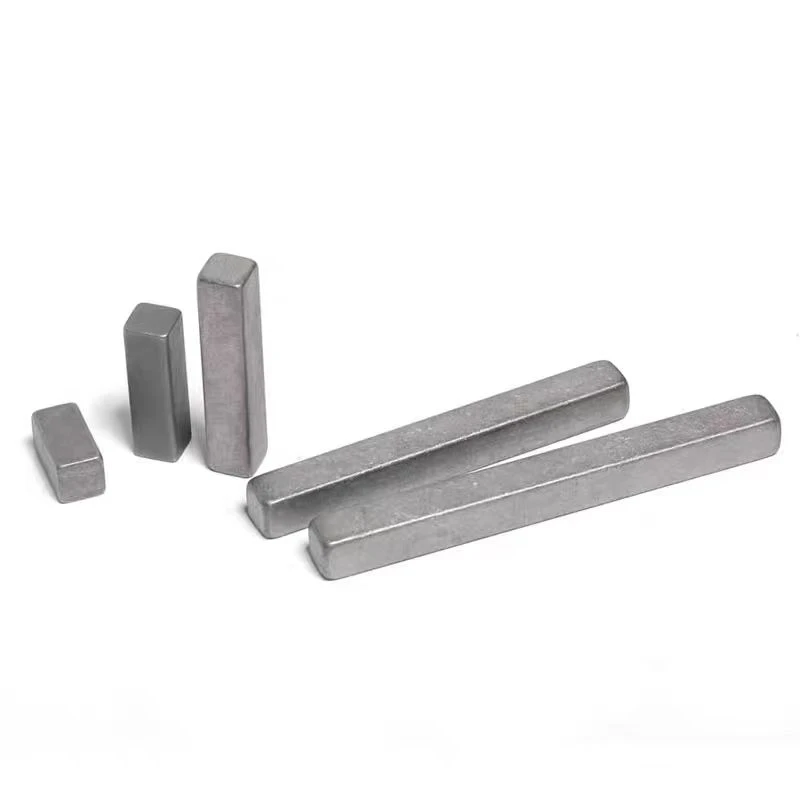

hardened flat washers
Dec . 01, 2024 21:18 Back to list
hardened flat washers
The Importance of Hardened Flat Washers in Engineering and Construction
In the realm of engineering and construction, there exists a vast array of components designed to facilitate the assembly and maintenance of machinery and structures. One such component, often overlooked yet critically important, is the hardened flat washer. This seemingly simple disk made from durable materials plays a significant role in ensuring the integrity and longevity of various applications.
Understanding Hardened Flat Washers
Hardened flat washers are circular metal plates with a hole in the middle, used in conjunction with bolts, nuts, and screws. What sets hardened flat washers apart from standard washers is their enhanced toughness and resistance to deformation. These washers are typically manufactured from high-strength steels that undergo heat treatment, which increases their hardness. This process provides the necessary strength to handle high-stress environments, making them suitable for applications in automotive, aerospace, construction, and heavy machinery sectors.
Key Functions of Hardened Flat Washers
The primary purpose of a washer is to distribute the load of a fastener over a larger surface area, preventing the fastener from sinking into the material it is securing. Here are several critical functions they serve
1. Load Distribution By providing a larger contact area, hardened flat washers help to distribute the load more evenly. This is particularly important in softer materials, where the concentrated pressure of a bolt can create deformation or even failure.
2. Protection Against Corrosion Many hardened flat washers are plated or treated to resist rust and corrosion. This is crucial in environments exposed to moisture or chemicals, ensuring that the washer—and the assembly it is part of—maintains its integrity over time.
3. Vibration Resistance In applications subject to significant vibration, like automotive engines or industrial machinery, washers help to prevent loosening of fasteners. They absorb some of the vibrational energy and tension, which could otherwise lead to loosening and eventual failure.
4. Alignment Aid Washers can help to align components as they are tightened, ensuring proper assembly and functionality. This is especially important in complex machinery, where precise alignment is critical for performance.
hardened flat washers

Types of Hardened Flat Washers
Hardened flat washers come in different sizes, thicknesses, and materials, designed to suit specific applications
. Some common types include- Standard Hardened Flat Washers Typically made from carbon steel and treated for hardness, these are used in general applications.
- Stainless Steel Washers Known for their resistance to corrosion, stainless steel washers are ideal for marine and outdoor applications.
- Plastic Washers Although not hardened in the traditional sense, plastic washers can serve to dampen vibrations and protect surfaces from scratches.
Installation and Maintenance
Proper installation of hardened flat washers is crucial to maximizing their benefits. When using washers, they should be placed under the fastening component, ensuring that they are clean and free from debris. The torque applied to the fastener should also be within the manufacturer’s specifications to avoid crushing the washer and losing its effectiveness.
Routine inspections can also extend the life of assemblies that utilize hardened flat washers. Regular checks for wear, deformation, and corrosion can prevent unexpected failures and costly downtime.
Conclusion
Hardened flat washers are a critical yet often underestimated component in many engineering and construction applications. Their ability to distribute loads, resist wear from corrosion, and maintain assembly integrity under vibration makes them indispensable. As industries continue to advance and face new challenges, the importance of reliable components like hardened flat washers will only grow, ensuring that machinery and structures remain safe and effective for years to come. Emphasizing the significance of these small yet mighty pieces can lead to better design choices and higher-performing systems across various applications.
Latest news
-
High-Strength Hot Dip Galvanized Bolts - Hebei Longze | Corrosion Resistance, Customization
NewsJul.30,2025
-
Hot Dip Galvanized Bolts-Hebei Longze|Corrosion Resistance&High Strength
NewsJul.30,2025
-
High-Strength Hot-Dip Galvanized Bolts-Hebei Longze|Corrosion Resistance&High Strength
NewsJul.30,2025
-
Hot Dip Galvanized Bolts-Hebei Longze|Corrosion Resistance&High Strength
NewsJul.30,2025
-
Hot Dip Galvanized Bolts - Hebei Longze | Corrosion Resistance, High Strength
NewsJul.30,2025
-
High-Strength Hot Dip Galvanized Bolts-Hebei Longze|Corrosion Resistance, Grade 8.8
NewsJul.30,2025

